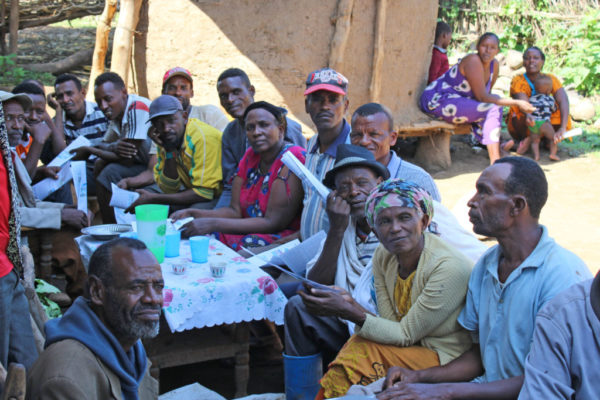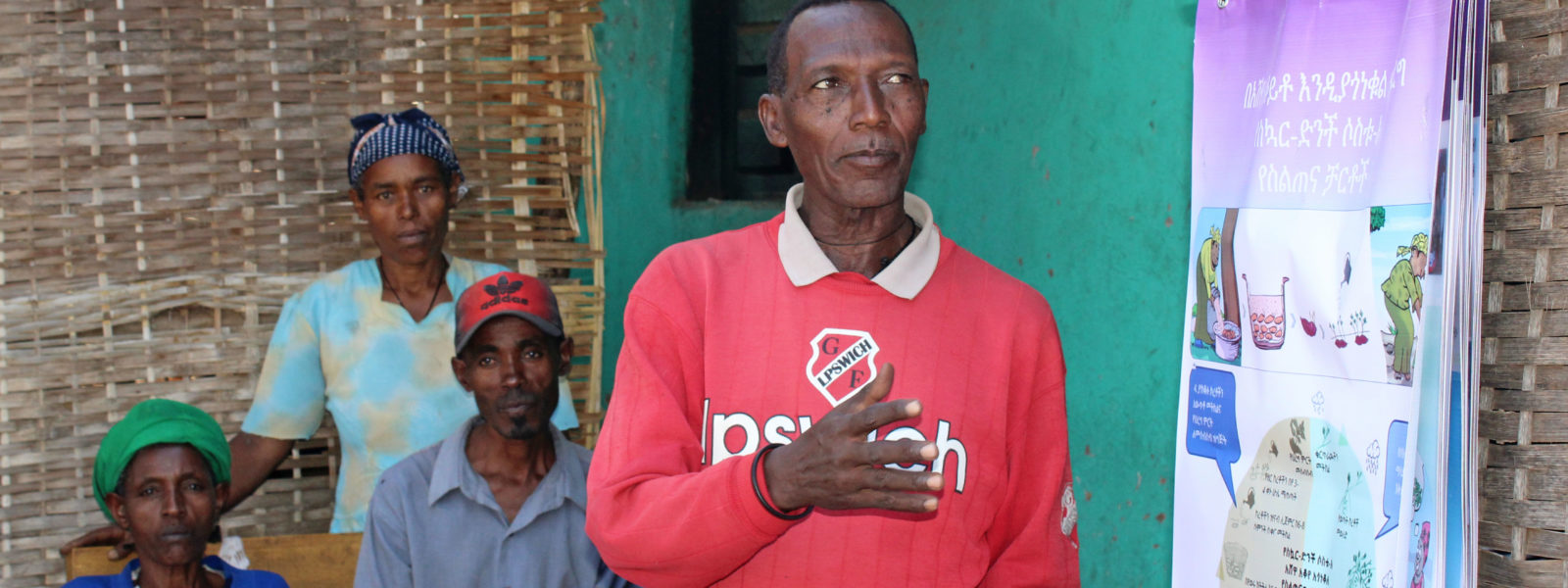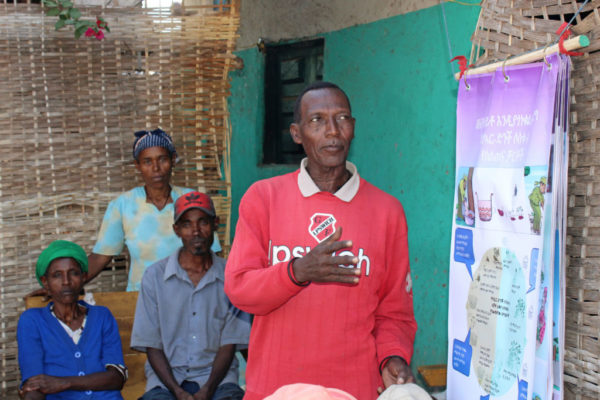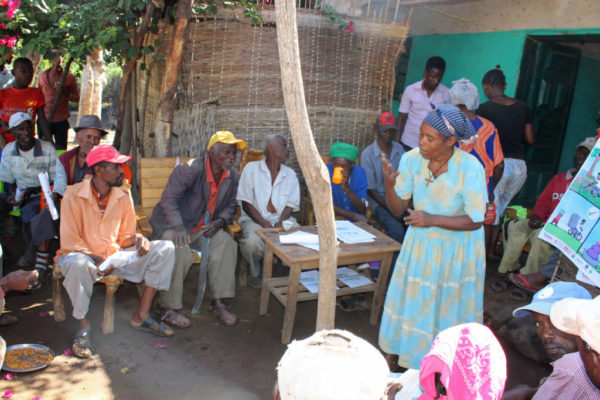“Seven to 10 years ago, sweetpotato was known as ‘the father of children’ because it was available throughout the year. Because the soil had moisture content during the dry season, we were able to conserve our vines by covering them with mulch,” began Merid Mengesha, an elder in Yayike village in the Mirab Abaya district of southern Ethiopia.
“But that is not the case anymore, the soil is dry for long periods causing all vines to dry before the next planting season. This technology has come at the right time,” he said to the room full of participants who had gathered to participate in a Triple S training session being conducted by village development agents.
Merid’s comments reflect the situation of many sweetpotato farmers in the region, who were struggling to produce, access or afford vines to plant their fields with sweetpotato at the beginning of the farming season.

Farmers listen attentively during a training at a Triple S Champion Household. Kolla Barana, Mirab Abaya. Photo: F. Asfaw/CIP
Triple S technology allows farmers to store sweetpotato roots through the dry season in a container of sand. As the rainy season nears, these preserved roots can then be planted in seedbeds and watered to sprout healthy planting material ready for sowing at the optimal time. The simple and affordable system has proven to be effective and is now being scaled to farmers across districts in southern Ethiopia through the support of the Scaling Fund of the CGIAR Research Program on Roots, Tubers and Bananas (RTB).
The Triple S PLUS project aims to reach 25,000 households in six districts in this region and is co-funded by RTB, the Bureau of Agriculture and Natural Resource Development (BoARND), People In Need (PIN), and the SASHA projects.
As part of the scaling approach, scientists from the International Potato Center (CIP) train district officials and village development agents on the benefits of the technology and how to use it. The development agents then identify and train Triple S ‘champion households’ and village leaders, who are in turn tasked with training at least 50 households in their community.
The Triple S ‘champion households’ are provided with training materials that they can use to pass along their knowledge to others at the Village Training Center and in the compounds of champion households.
Teferi Choramo and his wife Tolise Manise, are one such household and are training other farmers in Yayike. The couple were introduced to Triple S three years ago by CIP scientist Mihiretu Cherinet and have since successfully stored roots in sand and sprouted them to produce planting material in time for each planting season. This has positively impacted their household food security as well as income through the sale of roots.
Choramo and Manise have recently received new training materials and are especially happy with the new flip chart. “When we were trained before, we had to imagine what we were being told,” Choramo said. “Now that we have these materials, we can see pictures on how to set up Triple S and also see the happy farmer and the disappointed farmer!” added Manise.
The training is accompanied by a practical demonstration on how to select healthy roots for storage, how to dry the sand correctly, set up the storage container, arrange the roots with the right distance between them, and how to cover each layer with sand. Farmers in this area use a plastic container that can hold around 25 to 30 roots.
During the training, farmers have the opportunity to discuss their understanding of the technology as well as address common challenges. One of the challenges identified at Yayike was access to water for irrigation before the rainy season. Officials from the Farmer Training Center in this area agreed to assist farmers with water from the well in their compound for this purpose. The training sessions are also social opportunities where neighbors share coffee and the local snack, kolo – made from roasted barley, chickpeas and peanuts.
Alongside the training materials, CIP and BoANRD plan to broadcast radio programs and project training videos in local languages to disseminate knowledge of this technology for an even wider regional reach.
Scaling the technology will help thousands of sweetpotato farming households in southern Ethiopia to achieve food and nutrition security, by adapting their farming systems to the changing seasons, and to a changing climate.
This research was supported by CGIAR Trust Fund contributors.
Blog by Rosemary Kihiu, Communications, KM and Reporting Manager, and Holly Holmes, Communications Consultant


